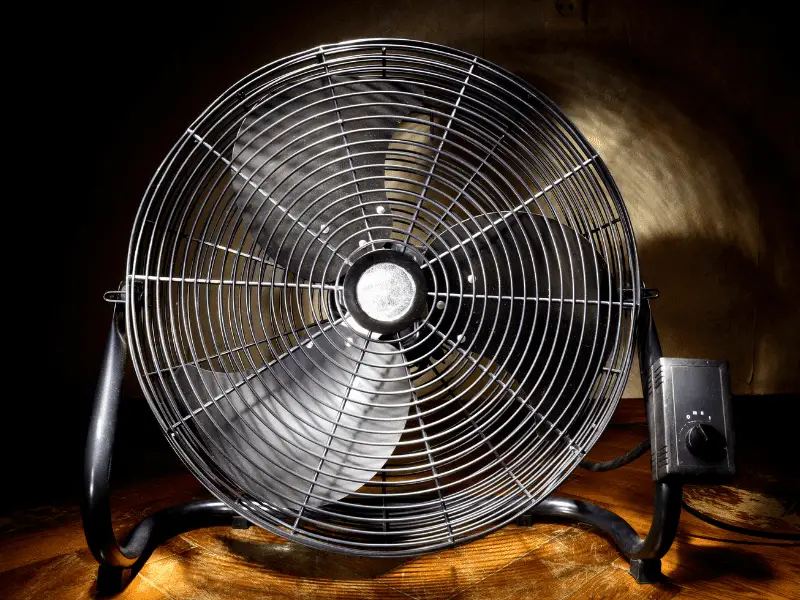It’s therapeutic to be one with nature every so often, especially if you’re used to the hustle and bustle of city life. And what better way to do this than to go out for a hike?
Though it may seem like a lot to prepare for, nothing can put a price on the feeling of fulfillment that comes with the experience. Just make sure you’re ready to put some effort into taking care of your hiking boots!
Depending on the terrain you’re dealing with, you’re bound to get your hiking boots wet and dirty altogether. On that account, this article will cover how to dry out hiking boots, so stick around.
This article contains affiliate links. If you buy something using these links I may earn a commission. Thanks!
Different Types of Hiking Boots

Hiking boots are a must-have for both casual and professional hikers. Not only does it provide comfort while hiking, but also protects you from ankle sprains and other injuries.
It’s important to gear up according to the kind of hiking you’re going for. Let’s take a look at the different types of hiking boots:
Lightweight Boots
Lightweight boots are relatively cheaper than other hiking boots. They’re usually made with nylon and light leather for a softer feel.
As lightweight boots have more breathability due to their material composition, drying them takes slightly less time than other boots. This is also due to the boots being lighter and thinner.
Lightweight boots are recommended for flat terrains or trails in the woods. If you’re an occasional hiker who just wants to go for light trails, this type is for you.
Midweight Boots
Midweight boots are less flexible than lightweight boots but provide more stability and ankle support. Despite being heavier due to their use of hard leather and other sturdy materials, they offer great support without being overly stiff and heavy.
Because midweight boots have heavier materials and little breathability, you’ll spend slightly more time drying them than with lightweight boots. An additional hour or two is to be expected in its drying time.
Midweight boots are perfect for rougher terrains and rugged hills. A bit of increase in price equals a high increase in protection and durability.
Heavyweight Boots
Heavyweight boots represent classic, heavy-duty hiking boots with full leather designs and rugged materials. What it lacks in flexibility is made up for with high-grade protection against the toughest of terrains.
As heavyweight boots contain the sturdiest materials with barely any breathability, drying these bad boys will take more time and patience than lightweight and midweight boots. Be prepared to add in a few hours of waiting as they dry up.
If you’re planning on conquering steep mountains or cross-country backpacking, you better have a pair of heavyweight boots ready.
Why Should You Dry Your Hiking Boots?

One of the questions you might ask is, “Why should I put so much effort into drying my hiking boots?” Here’s why:
- To prevent bacteria build-up.
- To avoid getting blisters.
- To avoid infections such as athlete’s foot, trench foot, and so forth.
- To promote longevity for your hiking boots.
According to the Foot and Ankle Associates of Cleveland , hiking with damp socks can cause blisters and fungal infections in your feet.
, hiking with damp socks can cause blisters and fungal infections in your feet.
If you don’t clean and dry your hiking boots properly, you might fall victim to nasty infections. Sounds reasonable enough, right? Let’s get right to it then!
Best Ways To Dry Your Hiking Boots
Whichever type of hiking boots you have, it’s best to keep them clean and dry after a long day of use. Even though they’re built to last, you can contribute to their longevity by keeping them clean and dry.
Before we get started on the best ways to dry your hiking boots, make sure to follow these steps first for the best results:
- Remove any debris or dirt build-up (mud, grass, and so forth). You can also rinse your hiking boots with water and dishwashing liquid if necessary.
- Remove the insoles from your hiking boots if possible.
- Remove the laces.
- Dry your hiking boots, insoles, and laces separately to save time.
Newspaper or Paper Towel

It shouldn’t be that space-consuming to carry a few old newspapers or paper towels if you want to speed up your hiking boots’ drying process.
The newspaper or paper towel method can be used whether you’re still on the trail and calling it a day or already within the comfort of your home.
To do this:
- Tear up some newspapers or paper towels before crumpling them into small paper balls.
- Make sure the paper balls aren’t too tight before putting them inside your hiking boots.
- Leave some space in your hiking boots so that the paper balls have some room to expand as they absorb moisture.
- Depending on how wet your hiking boots are, you can replace the paper balls every 2 hours if necessary.
Dry Towel or Rag
Like the paper balls method, this can be done indoors or outdoors. If you’ve brought some spare towels or rags, you can use them to soak up the insides of your hiking boots.
Make sure the towel or rag is completely dry before stuffing them up neatly in your hiking boots. Leave it like that for a few hours or overnight to get your hiking boots dried up as you rest and take a break.
Cat Litter or Dried Grains
While this method can cause a bit of a hassle due to the required materials, it works wonders in quickly drying out your hiking boots.
You can do this either at home or on the trail, as long as you have some spare socks, dried grains or cat litter, and a bucket big enough to fit your hiking boots.
To do this:
- Fill up the bucket with at least an inch of dried grains or cat litter before placing your hiking boots inside.
- Fill up a pair of socks with dried grains or cat litter, then insert them into your hiking boots. Make sure the socks are filled enough to occupy the space inside.
- Use a lid or anything big enough to cover the bucket.
Afterward, you can leave it for a few hours or overnight. Just like in the paper balls method, you can also replace the dried grains or cat litter inside the pair of socks if necessary.
Electric Fan

This one’s a traditional method that gets the job done. However, it’s likely only possible at home since you might not have a readily accessible power source while on a hike, and bringing a big enough electric fan is pretty inconvenient.
To do this:
- Use an electric fan that has a long stand.
- Hang your hiking boots on the exterior cage of the electric fan using a metal wire or string. Make sure the air is directly hitting the inside of your hiking boots.
- Place some weights on the base of the electric fan to prevent it from tipping over.
- Place a towel directly below the hiking boots to absorb any water droplets.
Leave this overnight, and your hiking boots should be all dried up in the morning. Be sure not to use a heated fan as it may damage your hiking boots.
Boot Dryer
The fastest way to dry your hiking boots is by using a boot dryer . The only downside is that you’ll need a power source, so this method might not be convenient outdoors.
. The only downside is that you’ll need a power source, so this method might not be convenient outdoors.
As the boot dryer stands for what its name means, you can easily get your hiking boots dried up in about 1-2 hours, unless they’re completely soaked.
Conclusion
It only takes a little patience and effort to dry out hiking boots. While some of the methods can cost a bit of money, it might be worth the investment to ensure a lot of safe and satisfying hiking trips.
Yes, it can be a bit time-consuming, especially with midweight and heavyweight boots, but it does pay off. Not only are you keeping your hiking boots in good condition, but also prevent yourself from getting foot infections.
You’ve now got the best methods for taking care of your hiking boots. Always keep them handy for all the adventures that are out there waiting for you.
